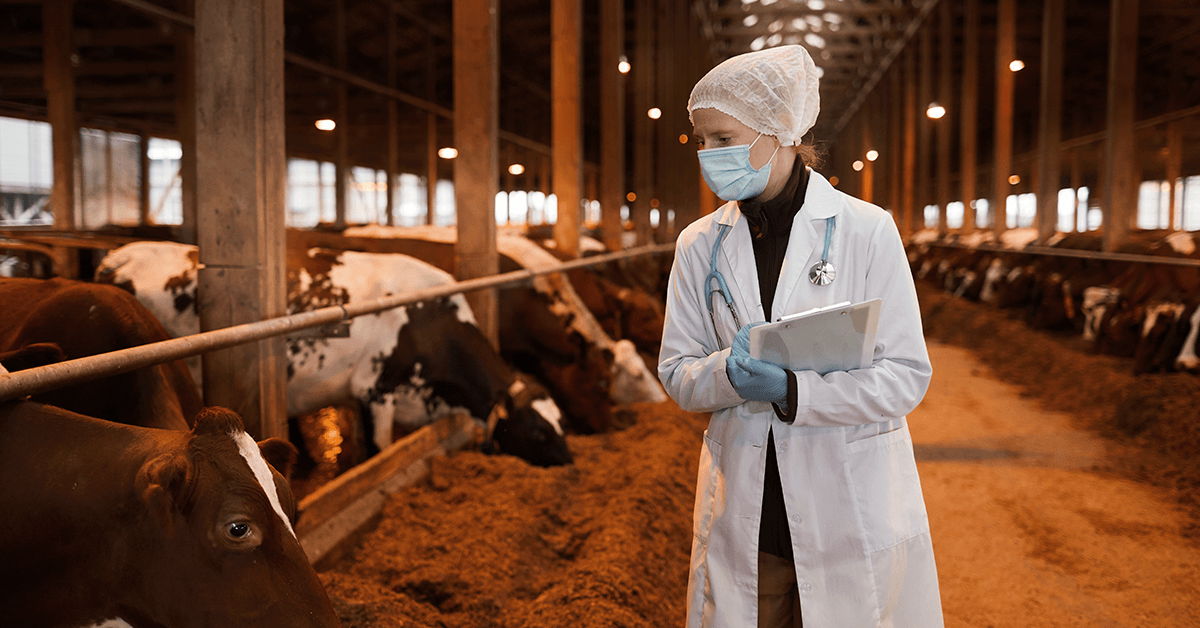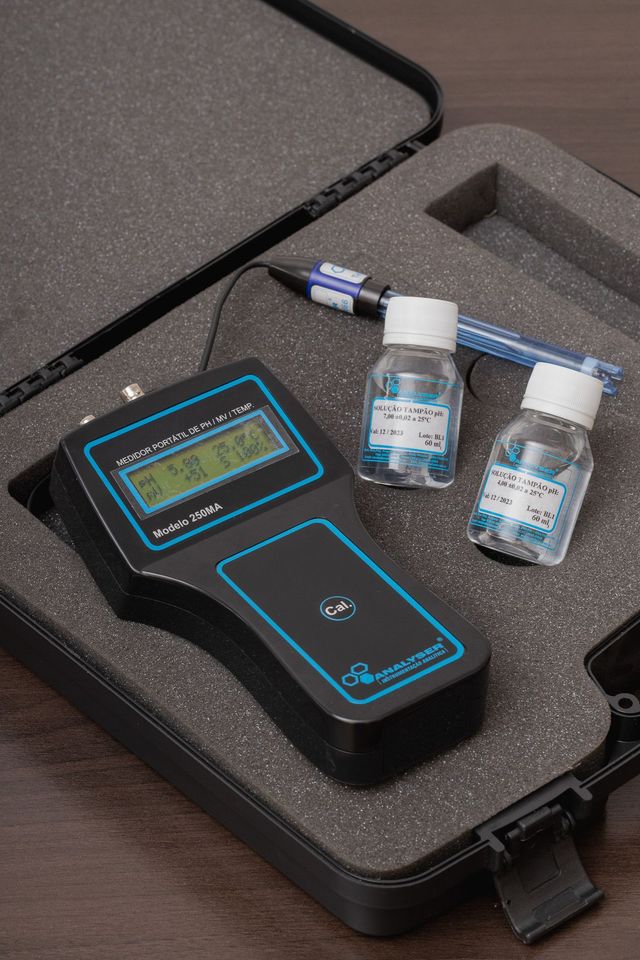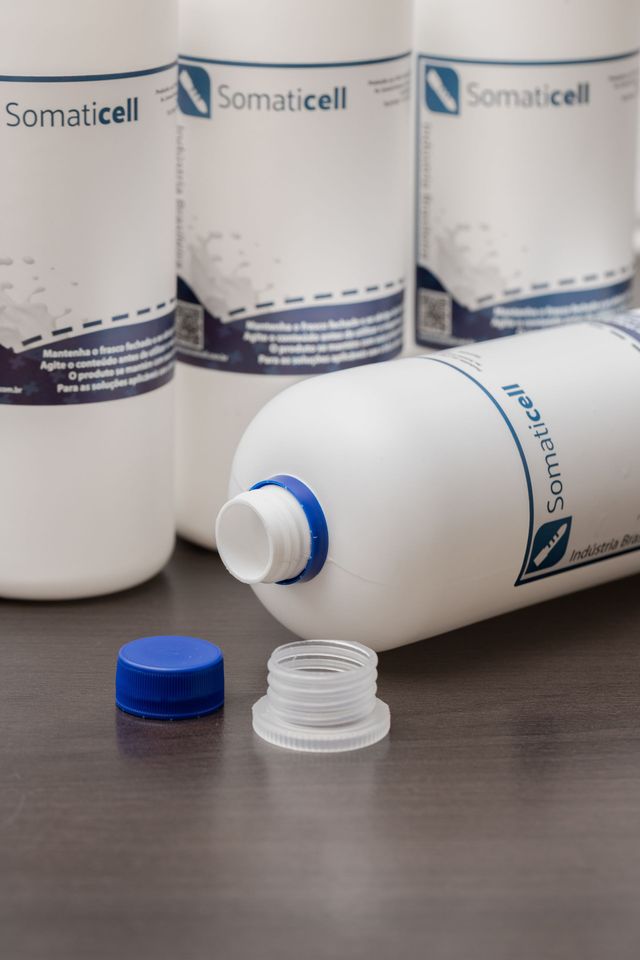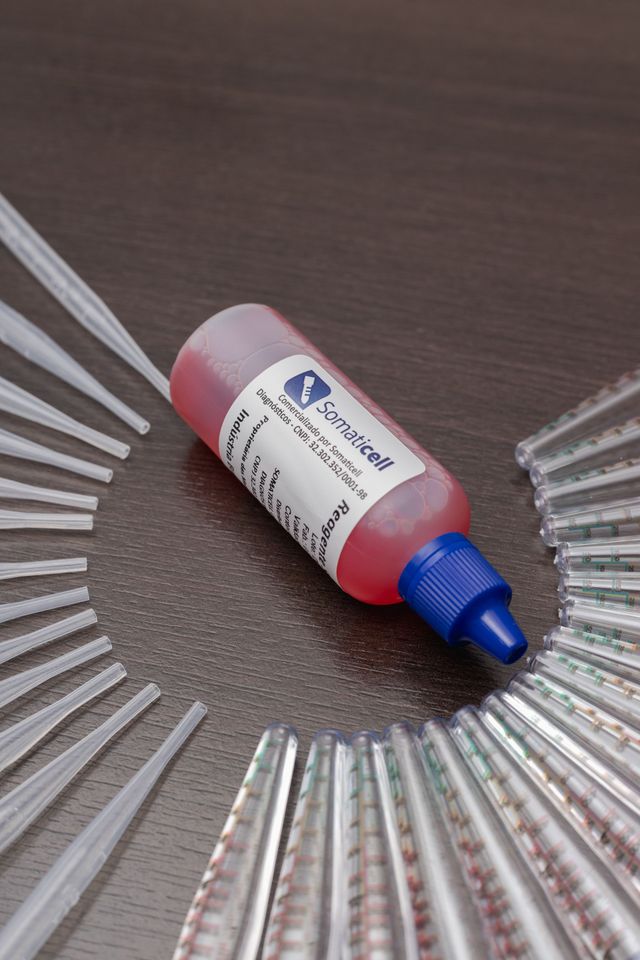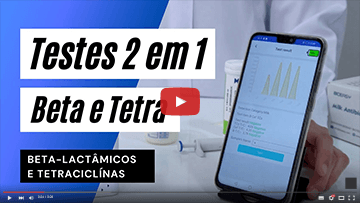How to choose the right antibiotic for the treatment of bovine mastitis?
Sem tempo para ler? Ouça a narração deste artigo em português:
There is more than one cause of mastitis, as well as more than one way to identify it.
Mastitis is the main disease that affects the quality and production of bovine milk. And for that reason it is necessary to be attentive to it, mainly because there may be clear symptoms of the disease, as well as a more silent manifestation of it.
Existe mais de um causador da doença, assim como mais de uma maneira de identificá-la. Saber identificar os causadores e também como descobrir se suas vacas leiteiras estão sofrendo com a mastite é fundamental para garantir uma produção de qualidade por meio do rápido tratamento de mastite bovina.
Esses fatores ajudarão no combate à mastite bovina e, com o diagnóstico correto, é possível escolher o antibiótico mais adequado para a melhora do rebanho. Algo que, consequentemente, melhora a qualidade do produto final. A escolha do antibiótico deve ser feita de maneira acurada e assertiva, pensando nas consequências do mesmo para o leite a partir de seus resíduos.
To help you choose the most effective antibiotic for your cattle, this article will show some aspects of mastitis, somatic cells and the factors that affect the choice of medicine. Therefore, if you want the best for your cattle and want to know how to choose the correct antibiotic for the treatment of the disease that most affects dairy production, do not miss this reading!
- Impactos da mastite bovina no leite e derivados
- What causes mastitis?
- Types of mastitis and its symptoms: factors to consider when choosing an antibiotic
Impacts of bovine mastitis on milk and dairy products
In terms of milk production, in quantitative terms, mastitis, or mastitis, affects the alveoli where milk is made. This occurs from the fixation of some pathogenic agent that decreases the uptake of nutrients from the blood. This factor hinders the conversion of these nutrients into milk, which consequently decreases the amount of milk produced.
In the qualitative aspect of the liquid, the main aspect that mastitis affects is the protein content. This occurs because the somatic cells – which are white blood cells – phagocytose the bacteria through enzymes, mostly proteases, which also end up degrading the milk proteins. The proteases in contact with the bacteria directly affect the bitterness of the milk and will change the composition of yogurts and cheeses, the period of validity, composition of the milk, among other aspects.
These factors not only affect the quality of milk, but also of its derivatives. The bitterness of cheeses is a trait directly affected by the protease content in milk and this can cause damage not only to the dairy industry, but also to the cheese industry.
What causes mastitis?
Mastitis is an inflammation that affects the mammary glands of cows. This is one of the main diseases of dairy cattle and there is more than one way for this disease to affect animals.
Bacterial contagion represents about 90% of cases of mastitis, and can occur between the beds and spaces shared by the animals, through contact with feces, flying insects that transmit the bacteria, and even through the use of the same equipment without sterilization , among cows at milking. It is also possible that after an injury to the udder, whether thermal, physical, chemical or mechanical, the cow triggers mastitis. Last but not least, stress in cattle can also cause mastitis.
When discovering the causes of this disease that affects the dairy herd, it is understood the importance of sanitizing the equipment and environments where the animals are. More than that, it is essential to monitor the cows during milking and to conduct a routine that is not stressful.
These measures, linked to a skilled workforce to take care of your herd, reduce the likelihood of mastitis affecting your cattle. In this way, instead of dealing with the treatment and fight against the disease, your investment will be based on preventive attitudes, less costly both in terms of the health of your animals and in the financial sphere.
Types of mastitis and its symptoms: factors to be taken into account when choosing an antibiotic for the treatment of bovine mastitis
Proper diagnosis of bovine mastitis is one of the main factors to offer a more assertive treatment with antibiotics. In addition to having different causes, there is also more than one type of mastitis, different symptoms and even the lack of them. Identifying the causative agent of mastitis is the first step in correctly choosing the remedy for your cattle. Check below the two possibilities of bovine mastitis:
Clinical mastitis
This mastitis has symptoms, which makes it easier to identify. In addition to the breasts presenting redness and/or sensitivity to the touch, it is also possible to verify symptoms such as changes in the appearance of the milk, such as mucus, pus and even the presence of blood. In addition, a decrease in milk production, changes in the animal's behavior, loss of appetite and fever are some indicators of the disease. Milk collected and identified with clinical mastitis should be discarded.
Subclinical mastitis
This mastitis has no symptoms. There is no change in the composition of the milk, nor physical symptoms in the animal. Therefore, to identify subclinical mastitis, there are two ways. One of them is to have an accurate look at the amount of milk offered by the animal, as subclinical mastitis will make the cow produce less milk.
The other way is completely technical: taking a CCS exam, a Somatic Cell Counting test, like the Somaticell CCS. These are defense cells from the blood of cows that go straight to the animal's breasts. The higher the SC content in the herd, the greater the loss in milk production, the ideal is to maintain a range between 50 thousand and 200 thousand somatic cells. The results inform about subclinical mastitis.
Accurate diagnosis as the main ally before the insertion of the antibiotic
Mastitis is a disease that affects the herd a lot. However, in about 20 to 30% of cases of mammary gland infections, the animals' own immune system acts and fights the inflammation. Therefore, the adoption of quality milking practices with trained professionals, promotion of cattle hygiene, routine care such as correct feeding and a stress-free environment are great allies when it comes to maintaining the health of the herd and avoiding infections. Despite this, not all of these precautions are always enough and, at that moment, it is necessary to move from preventive measures to treatment measures.
As seen, there are several causes and more than one manifestation of bovine mastitis, therefore, there is more than one antibiotic to treat the disease. As with the type of mastitis, it is important to identify the approximate time the cow or herd has been infected. This knowledge will directly affect the choice of the appropriate antibiotic. In case of a more developed infection, the remedy may already be another. Therefore, it is extremely important to obtain a safe diagnosis of mastitis in your animals.
How to get a safe diagnosis?
How to choose the right antibiotic for the treatment of bovine mastitis?
Upon noticing a drop in milk production or differences in its composition, the producer who looks after his animals and his own business must seek a reliable diagnosis to start treating the cattle. A qualified team, a good veterinarian and an assertive result form the combo that can help the dairy producer to rid his cows of mastitis.
For this, it is necessary to be demanding when hiring your own employees, the veterinarian and also when entrusting the results of your herd to a company. For those who want security in the results and partnership in search of the best for dairy cows, Somaticell's somatic cell count tests and diagnostic solutions are excellent options. Somaticell is a company that delivers security and guarantees a quick test with 97% correlation between the level of somatic cells and the electronic count.
The company specializes in dairy product quality and food safety. For this purpose, Somaticell has developed a test that provides the information that dairy farmers need to know to start treating their animals. And so, administer the antibiotics correctly.
O teste ocorre de maneira que o leite, ao entrar em contato com o reagente do
teste Somaticell CCS, sofre alteração em sua composição, apresentando variação na sua viscosidade de acordo com o volume de células somáticas. Desse modo, quanto maior for a viscosidade do leite, maior é a contagem de células somáticas, e portanto, maior a probabilidade de infecção do gado por mastite bovina. O resultado é dado em milhares de células somáticas por mL de leite.
After an accurate diagnosis through a microbiological analysis, the results provide information that allows the ideal choice of antibiotic, also taking into account aspects such as the age of the cows, the stage of lactation, the level of stress to which the herd is being subjected. and the incidence of the climatic period on them. In addition to these aspects, it is also possible to know if there is any injury to the cows and other indirect causes that result in infection. With this information, it is possible to take more assertive measures, especially when choosing the correct antibiotic to administer.
For this, it is important to recognize which pathogens are causing mastitis, whether clinical or subclinical. Among the main bacteria that cause mastitis are Staphylococcus aureus, Streptococcus agalactiae and Escherichia coli. The former are transmitted through contagion and the latter through the environment. In addition to microbiological differences, the period of infection influences the choice of antibiotic.
Veterinary recommendation is indispensable during the treatment of mastitis, as this professional will indicate the best antibiotic for the diagnosis found in the cow.
What are the losses caused by the inappropriate choice of antibiotics for the treatment of bovine mastitis?
In addition to the more assertive choice of antibiotic, the veterinarian also has knowledge about the dose indicated for each situation. The wrong application of an antibiotic or the dose of it can bring even more damage.
Antibiotic residues are one of these losses. Inadequate dosage or incorrect medication directly affect the quality of the milk. As a result, it is possible that there is acidification in the milk and changes in its composition and, consequently, in its derivatives - with emphasis on cheese fermentation.
For this reason, the application of an incorrect medication can make the situation worse for the cattle. In addition, it can cause the dairy producer to lose money with the disposal of milk with residues in concentrations higher than those allowed by law. Therefore, it is important to have the support of specialized professionals.
From an antibiogram, the professional identifies and discards the antibiotics that are not suitable for the situation. This occurs because factors such as lactation phase, causative bacteria and stage of infection are some of the aspects that only trained people can link to the correct antibiotic.
At the end of this reading, it is possible to understand the importance of carrying out the correct monitoring and supervision of the cattle, as well as the operationalization of the routine of these animals. Hygiene and care for them should be a priority to avoid the need to resort to antibiotics to deal with mastitis and other infectious diseases.
Do you want to know how to further improve the bovine mastitis control procedures in your herds? We can help you!
Com nossas soluções de diagnóstico de mastite bovina, sua cadeia produtiva de leite nunca mais será a mesma. Para saber mais informações sobre nossos serviços, entre em contato com a gente e
fale com um de nossos especialistas!

Conheça nosso App
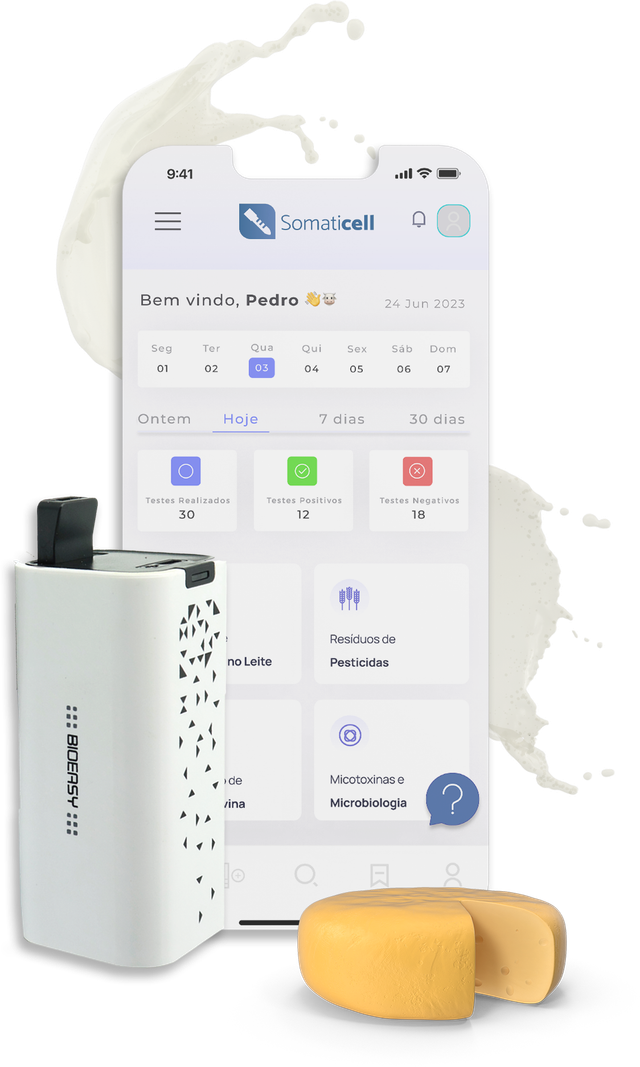
Our Educational Videos
Somaticell on Social Networks


